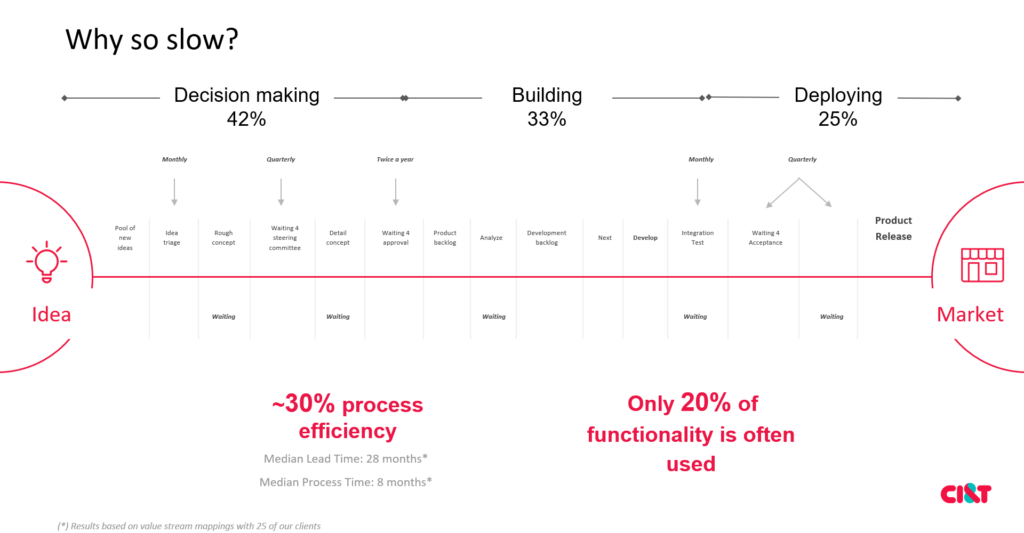

The past year has been a game changer for everyone. Organizations were able to shift to remote-first operations more quickly than any of us thought possible.
How enterprises acquire and introduce new technology has changed. Projects move much faster. Business leaders have shown greater tolerance for risk and are more accepting of failure. The role of the CIO, CTO, and CISO have proven more crucial than ever to organizational success.
As we begin to emerge into a post-pandemic state, the question becomes, how to carry this momentum forward and continue to bring innovation directly into enterprises?
To answer that question, I was joined on our CIO Insight Call by three master practitioners.
Our speakers:

Key Takeaways:
Don’t Just Fail Fast; Fail Smart
Everyone is familiar with the zombie project – ambitious corporate initiatives that were doomed to fail from the start but are ‘too big to kill.’
By the time a major initiative is approved by the board, it’s crammed full of ideas from too many people. As a result, these projects drag on for years, with more than 70 percent of that time spent getting people to align on what to build and how to do it. In the end, usually only 20 percent of what has been built ends up being used.

Unlike companies like Google and Facebook, which are ruthless about killing projects when it becomes clear they will not scale, very few business leaders are willing to admit defeat. And when that project ultimately fails, all they’ve learned is what doesn’t work.
The fact is, no one actually knows what will work until they try it. It’s all hypothesis. You can run endless focus groups and surveys, but what people say they will do isn’t necessarily what they end up doing. People told McDonald’s to add more salads to its menu, but they still really wanted to eat Big Macs.
“Many things that look like good ideas actually aren’t. You can run a project for 28 months, only to find out your ideas are no good when they hit the market.” -Bruno Guicardi, President & Co-Founder, CI&T
The key to innovation is: don’t try to do too much at once. Don’t conduct company-wide ‘projects’; instead, run smaller experiments within a product team. By testing only the core hypothesis, you can shrink the scope of experiments, get results much faster, and improve the process of innovation by an order of magnitude.
Create Small Cross-Functional Teams with Clear Goals

Itaú Unibanco is the largest bank in Latin America. And since they began their digital transformation journey in earnest half a decade ago, they’ve pursued fewer traditional IT projects and a lot more experiments.
To make this happen, the bank created multi-disciplinary teams around different customer journeys. Personnel from the business side, operations, user experience, technology, and other departments are organized in squads of roughly 10 people and given a specific problem to solve – for example, how to grow market share in credit cards. These squads generate very simple ideas and test them out on a small number of customers. Every week they evaluate their results: If the idea has failed to move the needle, it’s abandoned.
“We kill 90 percent of the ideas we have. The secret sauce is to kill fast. Don’t insist on continuing something that’s not working, because that’s a waste of time and money.” -Ricardo Guerra, CIO, Itaú Unibanco
The bank has also democratized decision making, with mid-level managers empowered to green-light ideas. And it has embraced new technology platforms. The more granular and service oriented the bank’s tech architecture, the easier it is to conduct smaller experiments.
Amplify the Value of Innovation
As work life returns to something resembling normal, there’s a natural tendency to the return to the old way of doing things, losing the speed and agility the pandemic proved was possible.
Avoiding that fate requires cultural change on a grand scale. But it usually starts by partnering with an executive or team that needs help and is willing to do things differently. Once you’ve demonstrated the value of innovation, you can amplify their story to the rest of the organization.
“I tell my people ‘POCs, not PPTs.’ We do proof of concepts, not PowerPoints. We want people to experience digital firsthand and build things they don’t think are even possible. That wins people over.” -Mike Reilly, Global Head of Supply Chain Customer Connectivity Digital Products, Johnson & Johnson
Ultimately, culture is a set of beliefs about how people were successful in the past. To change corporate culture, you have to introduce a new way of being successful.
